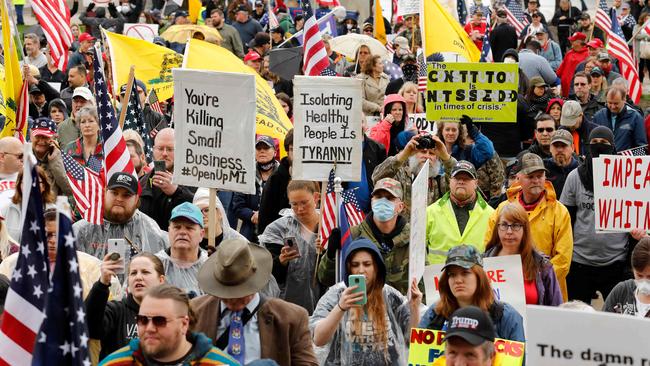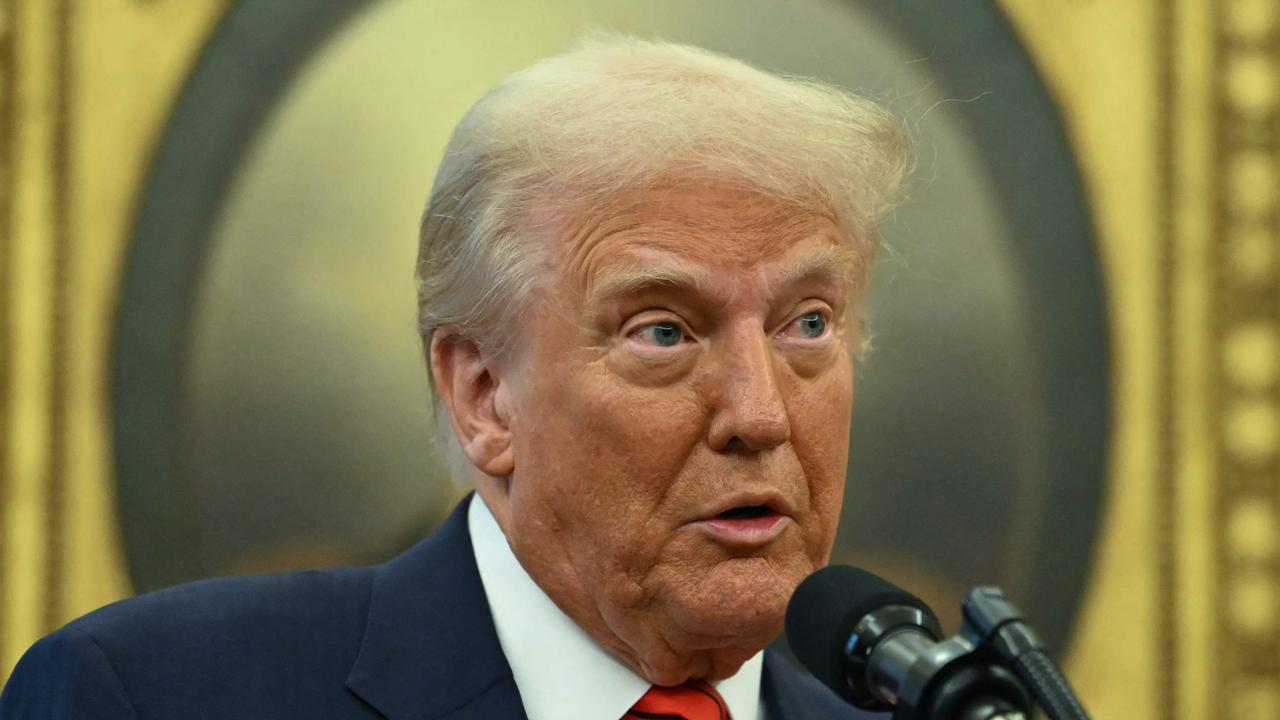
There has to be the first canary down the mine shaft.
When it comes to providing a how-to on moving from lockdowns to opening public spaces and economies, it’s the United States which will make the most fascinating viewing. With the end of the presidential stay at home order ending last week, states are now allowed to make their own decisions.
No one could say the US has handled the pandemic well thus far. It has broadened the already vast political divide in the country with gun-toting protesters in the Michigan Capitol building in Detroit all the way to shoulder to shoulder rallies in the US homes of progressivism, California and Massachusetts.
It is in these weird times one has to look for satire wherever it comes.
Brent Terhune is an American comedian who sports a MAGA hat and among other things demands his constitutional right to open carry an AR-15 assault rifle at a Build-A-Bear down at the mall.
Keep the state closed??? I DONT THANK SO pic.twitter.com/LsgAXZqgcq
— Brent Terhune (@BrentTerhune) May 1, 2020
“It’s what the founding fathers would have wanted,” he says deadpan.
The best satire is barely distinguishable from reality and so it is with the short videos Terhune routinely posts on social media.
Amusingly, many of those on the left think Terhune’s southern drawl, ferocious demeanour and ersatz COVID-19 dry cough that he intersperses throughout his rants, are a fervent call to arms against the stay at home orders. Terhune gleefully reposts his many progressive critics whose sense of humour left them long before the pandemic struck.
To those who have misplaced their capacity to laugh, here’s a hint: when someone kicks off a sentence, “The Constitution of these United States, which I haven’t read …” or “It got me to thinkin’ which I very rarely do …” he is probably not being serious.
Meanwhile, that most seismic of shock jocks, Alex Jones, is battling with the nutritional shortcomings from stay at home orders.
As far as I can tell Jones isn’t a satirist but might have a real talent for the caper. He has been eyeing off his neighbours to see which one he will eat first. His superpower is truth telling or so he says, and so Alex went off tap last week, pondering how he was going to gut, slice and dice his neighbours none of whom, unsurprisingly, were invited to comment.
This is my ex-husband, Alex Jones, graphically describing how he'll kill his neighbor to f e e d my kids:
— Kelly Jones (@RealKellyJones) May 1, 2020
Homicidal.
Terrifying.
I lost my kids for tweeting about injustice.
This is UNJUST to my kids.
This is a mom's worst nightmare.
Court must act.
Help RT pic.twitter.com/vCxaVcros6
I get the sense that Jones is comfortable in front of the broiler and may be only looking at choice cuts. At least Wisconsin serial killer, Ed Gein knew how to make a stew.
In the midst of this craziness, the US has begun to do away with state-based stay at home orders with 24 of the fifty states opening businesses including restaurants, entertainment and retail centres, generally with some form of mandated social distancing in place.
President Trump has signalled the Coronavirus Task Force headed by Vice-President Mike Pence will soon be shut down and replaced with “something in a different form”.
Some in the US refer to this as preparation for a second wave of infection but that is erroneous. The US remains deeply immersed in a first wave of COVID-19 infection that continues to spread across the continent.

Take New York State out of the statistics — where there has been a plateau in deaths and a decline in recorded cases — and there is growth in infection and death rates across the US.
Most alarming is epidemiological analysis that infection and death rates are rising more in rural America than in its urban centres.
The Kaiser Family Foundation, a non-profit, apolitical reporter on health care issues in the US determined that in rural counties in the US, “both cases and deaths are growing at a faster rate compared to metro counties. In the two-week period between April 13 and April 27, non-metro counties saw a 125 per cent increase in coronavirus cases (from 51 cases per 100,000 people to 115), on average, and a 169 per cent increase in deaths (from 1.6 deaths per 100,000 people to 4.4). Meanwhile, metro counties saw a 68 per cent increase in cases (from 195 cases per 100,000 people to 328) and a 113 per cent increase in deaths (from 8.0 deaths per 100,000 people to 17.0).”
The county with the highest death rate per capita in the US is Terrell County, Georgia a rural county 300 kilometres from Atlanta.
While areas of small population and low population density won’t provide the appalling death tolls seen in New York City, the lack of health care resources and logistics in rural areas mean higher death rates per capita.

Meanwhile Metro Atlanta continues to report sharp increases in recorded cases.
The real impact of opening up economies in terms of infection rates and deaths won’t be properly understood for four to six weeks. Those who scan the statistics now looking for evidence will not find much at present. It is later this month and into June when the data and then judgment will come.
One thing we should not expect is wholesale infection. There is something very odd about the way infections occur with SARS-COV-2. The Italian example is instructive. The south of the country has barely been touched by COVID-19 while infection and death rates in the north have exploded. We might put this down to population density but overall deaths due to respiratory illness which include influenza and COVID-19 and pneumonia unrelated to COVID-19 infection, have increased in Rome by only two per cent. Rome has a greater population density than that of Italy’s COVID-19 ground zero, Milan.
We could also examine Sweden’s attempts at fighting COVID-19 transmission which include no mandated lockdown. Sweden’s death rates are high, much more so than their other Scandinavian neighbours. In sheer number of deaths, Sweden sits between Turkey and Mexico.
Nevertheless, Sweden has a better idea of community infection rates than most other countries. It will be worth watching and offer lessons to policy makers in Australia.
But it is the US which will provide the most compelling case for how other countries, including this one, should go about the how and most critically the when on opening up their economies. It may very well be that what the US offers the rest of the world is a comprehensive template on how not to go about it.







